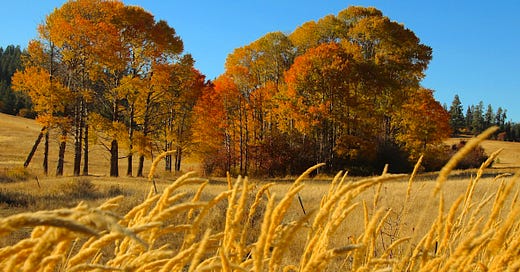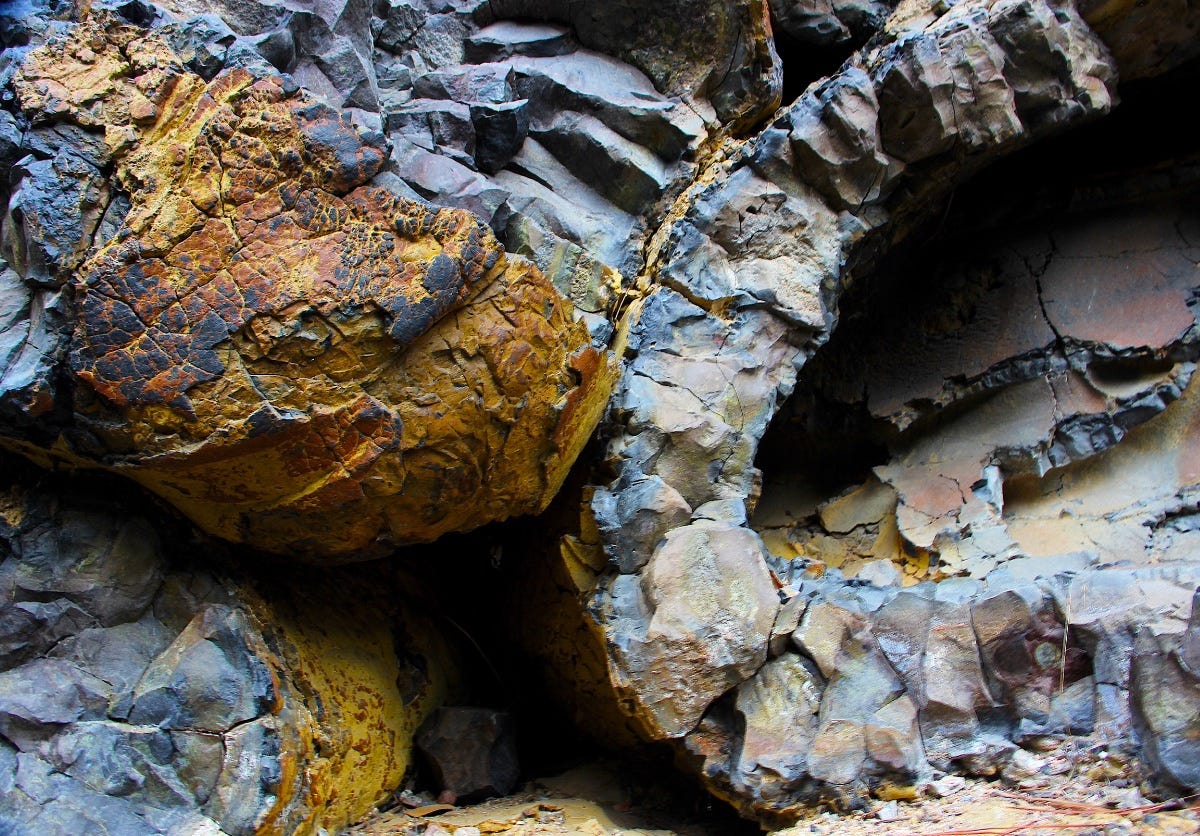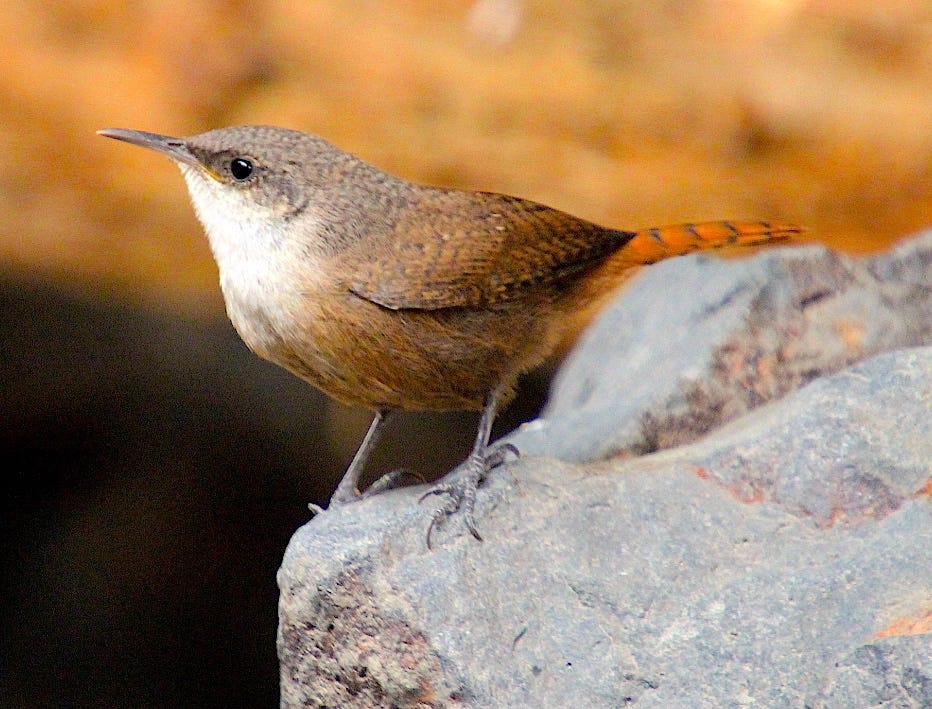Birch grove in flaming autumn color near Worley, Idaho
A magnificent rift
Yesterday was one of those days, at least in and around Spokane, where there was no bad choice on which way to go if you were drawn to be outdoors.
It is, of course, mid-October and the discernible chill and mercurial weather means a plan to play tennis can quickly turn to cross-country skiing on relatively short notice. Thus, I brought two caps with me to go hiking, starting the morning in a tuque to keep my ears warm, knowing I would eventually switch to the baseball cap I’d stuffed into my camera bag. The plan for the hike—which turned out to be a very good one—was to meet my friend Sean and his wife Jessi at a popular trailhead just above the Deep Creek ravine in Riverside State Park. Sean, like me, is a bird enthusiast and Jessi is an associate professor of Biology at Eastern Washington University. Her specialty is mycology, which encompasses the study of lichens, her focus as a researcher.
Palagonite and ancient lava tube in Grande Ronde basalt in the Deep Creek ravine
The treks that led to my Beautiful Wounds book on the channeled scablands of the lower Columbia Basin re-acquainted me with my inner rockhound, dating back to my childhood. It is just in the nature of things that the photography of the geology would have to include lichens. (And, here, as elsewhere, I’m using lichens as shorthand for the complex fungus, algae-cyanobacteria variants—of which there are several thousands—that commonly attach to rocks and trees.)
Canyon wren, deep in the rocky recesses of the Deep Creek canyon
This is how one vein of interest leads inexorably to the next. Not only did the Ice Age floods strip away the loessial soils in our area to expose dramatic basalt columns, but the fleet of inland icebergs the floods unloosed carried with them all sorts of granitic, metamorphic and sedimentary rocks. These stowaway “erratics” can now be found atop buttes and hillsides throughout the scablands, as far away as the Willamette Valley in northwest Oregon.
To continue reading this post, please subscribe to The Daily Rhubarb







